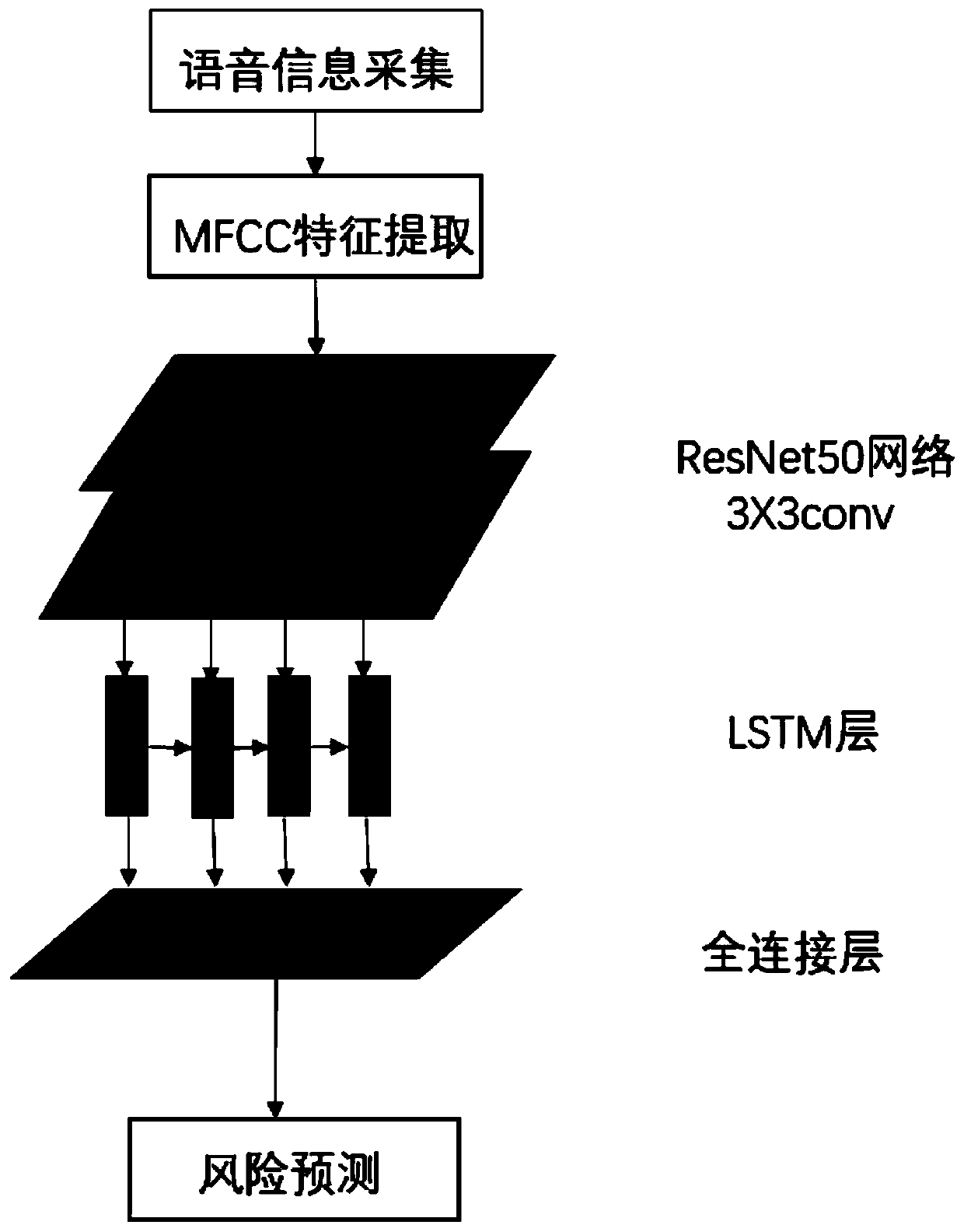Cerebral stroke dysarthria risk prediction method based on ResNet and LSTM network
A technology for dysarthria and risk prediction, applied in the field of deep learning, can solve problems such as inability to achieve high efficiency standards, inability to guarantee accuracy, uncertainty in risk prediction, etc., to achieve objectivity, easy access, and improved efficiency. Effect
- Summary
- Abstract
- Description
- Claims
- Application Information
AI Technical Summary
Problems solved by technology
Method used
Image
Examples
Embodiment Construction
[0036] The present invention will be further described below in conjunction with specific embodiment:
[0037] like figure 1 As shown, a method for predicting the risk of dysarthria in stroke based on ResNet and LSTM network described in this embodiment includes the following steps:
[0038] S1. Voice information collection:
[0039] Choose a quiet treatment room, use recording equipment to collect specific voice information, the collected voice information includes stroke patients and normal people, and keep the number of people in each category the same. The speech data is divided into training set and test set in proportion for subsequent construction of classifier and subsequent training.
[0040] S2.MFCC speech feature coefficient extraction is mainly divided into the following steps;
[0041] 2.1. Preprocessing the voice information, this step includes the following work;
[0042] Pre-emphasis: Pre-emphasis is a signal processing method that compensates the high-freq...
PUM
 Login to View More
Login to View More Abstract
Description
Claims
Application Information
 Login to View More
Login to View More - R&D
- Intellectual Property
- Life Sciences
- Materials
- Tech Scout
- Unparalleled Data Quality
- Higher Quality Content
- 60% Fewer Hallucinations
Browse by: Latest US Patents, China's latest patents, Technical Efficacy Thesaurus, Application Domain, Technology Topic, Popular Technical Reports.
© 2025 PatSnap. All rights reserved.Legal|Privacy policy|Modern Slavery Act Transparency Statement|Sitemap|About US| Contact US: help@patsnap.com



